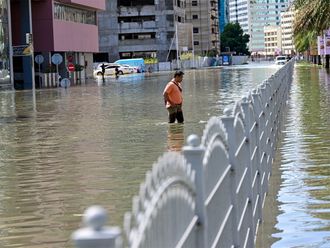Dubai: No matter how good a driver you are, parking is a cause of concern for many. We find out why and how to get it right.
According to Robert Hodges, Chief Operating Officer of Emirates Driving Institute, parking in the UAE is generally treated too casually by drivers and is often the cause of accidents and vehicular damage.
Explaining the correct methods of parking, he said parking can be divided into three main components: entry into a parking space, positioning the vehicle in the parking space and safely exiting the parking space.
“Each of these three elements affect safety and can either heighten or reduce the probability of an accident or damage to your or another person’s vehicle. Whether you intend to park at the side of a road, or in a space in the parking area of a mall, the principles are the same,” said Hodges.
According to Hodges, reversing into a parking space is always safer.
“Whenever the traffic direction or angle of the parking bay allows, it is always safer to reverse into a parking bay. It is safer because it allows the driver to move out forwards on departure and have best direct visibility of hazards and any approaching vehicles or people. You can also then accelerate smoothly and match the surrounding road speed conditions more readily,” he said.
He added that reversing out also causes a traffic jam as the car that is reversing causes approaching traffic to stop.
“During this reverse and transition phase you, your passengers and your vehicle are all more vulnerable to a side impact from an inattentive oncoming driver,” he added
Dos and don’ts of parking
Here are the key points to consider while parking a vehicle:
Entry into parking
• DO look well ahead to spot a parking space early and slow down progressively and carefully – do not suddenly stop without warning – you will be tail-ended.
• DO ensure that you make full observation of all moving vehicles nearby, especially if you are parking at the side of a road, when your car’s movement may cause passing cars to swerve unnecessarily.
• DO assess the correctness of the space and pull up short of the intended area to allow yourself space for proper and careful manoeuvring.
• DO consider whether to drive in forwards or reverse in.
• DO take stock of approaching vehicles. Use your indicator to show you intend to turn into the selected space.
• DO wait until it is safe to move position; your parking movements should not cause any other vehicle to unintentionally change course or speed.
• Do not just speed into the space, skid to a halt and imagine this is a safe thing to do.
• When safe, carefully make the necessary turn into (forward) or reverse into (backward) the selected space. Constantly move your head and eyes and look around you and also make mirror checks. Good parking takes quite a few moments, and things can change around you during that time.
Positioning the vehicle
• When in the space, open your door slightly and check the lines to ensure that you are within your correct space and parked straight. If not, then either reposition or change to a better available larger parking space.
• If parked in a parallel bay at the side of a road, check that you are central, and that your front or rear end is not overhanging the next space. This is selfish and is also a police traffic offence.
• In a mall or roadside ‘side by side’ parking (60°/ 90°/ angular) check the adjacent vehicle’s doors are not blocked by your having parked too close. If necessary, move gently out of the space and reposition your vehicle. This will avoid dents and damage to either your car or the car next to you.
• DO consider folding-in your door mirrors to enable people to pass your parked car if the parking bays are narrow.
• DO reverse into a straight line (parallel) parking bay at the side of the road. This allows good manoeuvrability. If you drive in front-first, then your tail-end will be left sticking out as an obstruction. Always park in the direction of traffic flow.
• DO check roadside signs for RTA parking rules – purchase a parking ticket or mPark notification if required.
• When you leave your vehicle, ensure it is locked, and that valuables (tablets/laptops/satnavs) are all safely out of sight.
• Never leave the vehicle unattended with its engine running, or with children left on their own to ‘play’ in the car with the engine running. The first is a Federal Traffic offence, the second is irresponsible parenting, risking injury/death.
Exiting the parking space
• DO check that you and all your passengers are seated and wearing seat belts/child seats prior to starting your engine.
• DO make all-around observations to check for people (especially kids), obstructions (trolleys/ concrete pillars/ barriers/ cars parked too close), make a judgement as to whether you will need to move out straight or immediately steer on initial movement.
• DO not allow your car to move until you know there are no other vehicles moving past you.
• Never just reverse out and expect other cars to stop for you. Wait until your exit area is clear and then drive out slowly and smoothly, making observations all the while.
• DO not trust ‘anti-collision sensors’ – these are driver aids only and the driver should make the decision, not the electronic systems.
• If you are reversing out and do not have good visibility, ‘inch out’ at a minuscule speed, and keep careful, continuous watch for moving cars or people.
• DO open your window, and listen for other approaching vehicles and/or people.
• DO consider asking your passenger or a parking attendant to help you reverse by giving you hand signals as to safety.
• DO not imagine that (wrongly) switching on your hazard lights when exiting a parking bay will give you the automatic ‘right’ to move into the path of vehicles travelling past you. It doesn’t! Stop, look and listen until it is safe to move.











